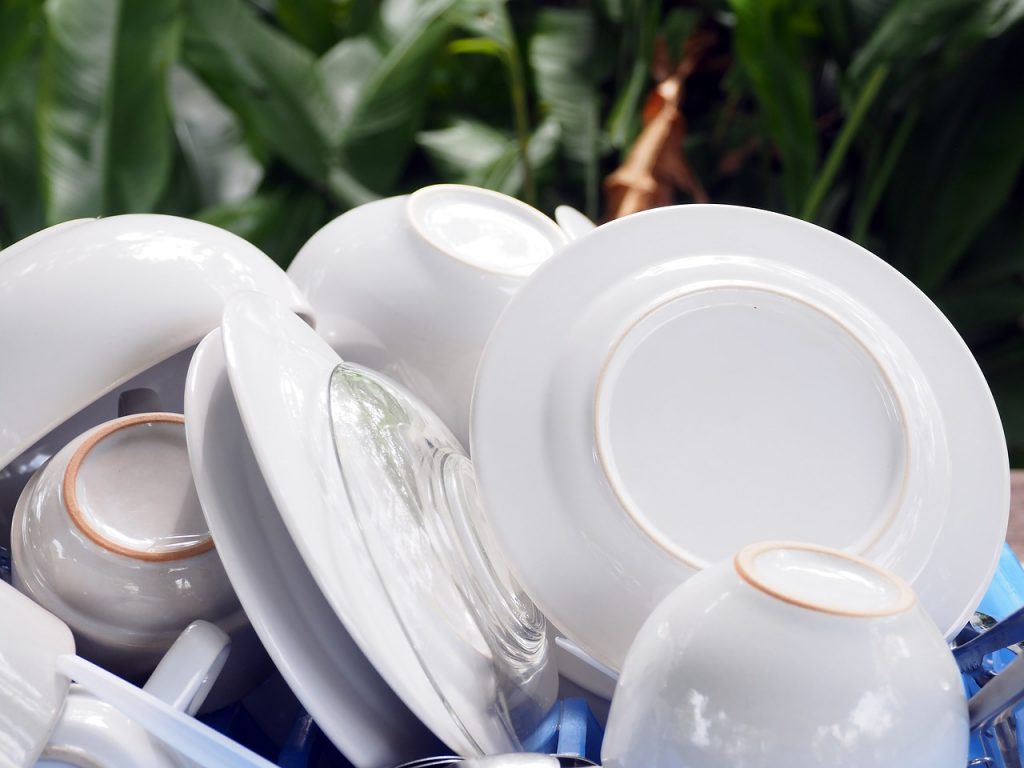Water, soap, lemon juice, baking soda – with their help you can quickly and safely clean porcelain cups and mugs and restore their shine.
Porcelain tableware looks beautiful and can last for many years, but it is important to know how to handle it properly so as not to accidentally damage it. First of all, we should prevent any impacts; each of them may cause chips or even breakage.
If you want to refresh porcelain cups and mugs, first of all, prepare a plastic bowl. It’s better not to wash them directly in the sink as you might accidentally knock them off or they might slip out of your hands. It will be much safer in a bowl – and here’s another note: wash each dish individually.

What is important is that you do not use any rough sponges, sharp brushes or wire scrubbers. They will leave scratches and abrasions on the surface and destroy the ornaments or gilding. A fine sponge or soft cloth is sufficient for cleaning porcelain. If you have a cup with a sophisticated shape, you can also use a soft brush to reach hard to reach places.
You should also remember not to dry wet porcelain on a drying rack, but immediately wipe it dry with a paper towel or cotton cloth. Otherwise there will be unsightly stains on it.
The answer to the question whether porcelain can be washed in a dishwasher is simply no. Mechanical cleaning, strong stream of water and detergents will gradually remove all decorations. There is also a risk of cracking the dishes due to temperature changes. In a dishwasher, hot water is used first and then cool water. This is especially true of old china inherited from grandma or great-grandma, which was not dishwasher safe because dishwashers simply did not exist yet.
Nowadays, durable porcelain is available in stores, but if it has decorative gilding, it still cannot be washed in a dishwasher. The same is true for microwave ovens – not only can you ruin cups and mugs with gilding or patina, but you can also damage the entire appliance. Temperature fluctuations also have a negative effect here.
A great – and safe – way to thoroughly wash and refresh porcelain cups and mugs is with soapy water. Just dissolve soap in lukewarm water in a bowl prepared beforehand and slowly wipe the porcelain with a soft cloth or sponge. The whole process will take some time, it is not worth rushing with it.
What is important, for porcelain mugs and cups with gilding, hand-painted, that is the most delicate ones, it is better to use cold water with the addition of lemon juice in the proportion of one lemon to one liter of water. Lemon has whitening, disinfecting and caring properties.
We usually drink tea or coffee in mugs and cups, which unfortunately leave a stubborn residue. In addition, women usually have painted lips, and as we know, lipsticks are durable, but some like to leave difficult to remove marks.
With all this can cope with another kitchen helper, namely baking soda. Just wipe the dirty area with a wet cloth with baking soda, rinse with water and then wipe dry. If you have to deal with old stains and discolorations, it is best to prepare a paste of water and baking soda – apply it to the chosen spot and after fifteen minutes, wash it off.
Stubborn dirt can also be removed with a solution of water and bleach. Here, it is enough to soak a cloth or a cotton wool in it, put it in a cup or a mug, and after a few hours at the most, take it out and wash everything thoroughly.